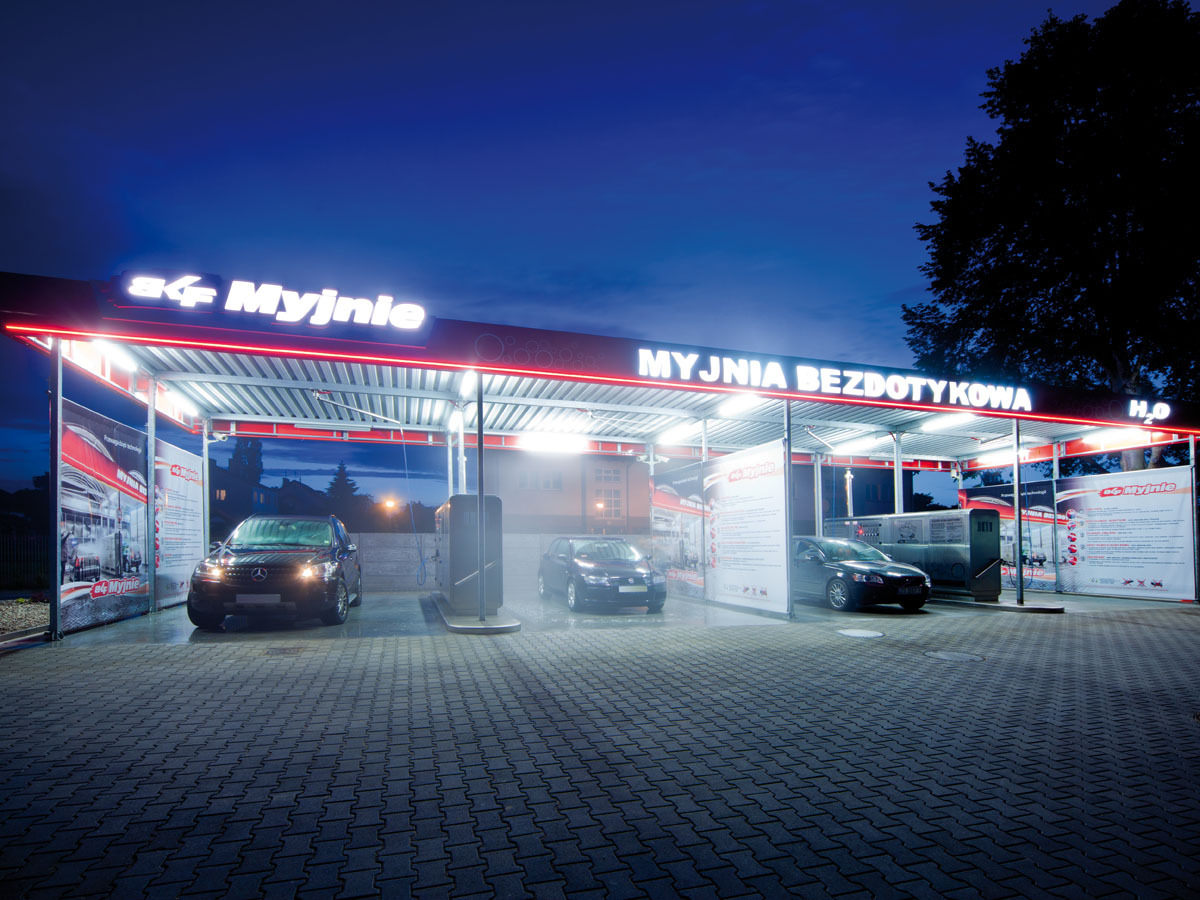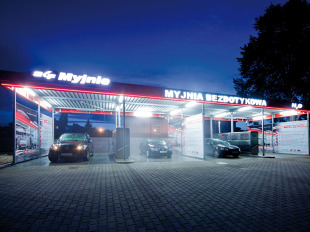
Washing your car in winter will protect the paintwork from damage.
 When washing a car in winter, we remove particularly stubborn dirt, deposits of chemical compounds harmful to the metal sheet, and salt residues. Keeping your car clean can be easy, pleasant and, most importantly, cheap - just use a touchless car wash.
When washing a car in winter, we remove particularly stubborn dirt, deposits of chemical compounds harmful to the metal sheet, and salt residues. Keeping your car clean can be easy, pleasant and, most importantly, cheap - just use a touchless car wash.
Paint Safety
In winter, to make driving easier, road workers sprinkle sand, gravel and salt on the roads. Unfortunately, these measures cause damage to the car body. Gravel can chip the paintwork, and due to the fact that there is a lot of moisture in the air, rust can also form very quickly. In addition, salt greatly accelerates the rust process.
A touchless car wash is often referred to as a "scratch-free car wash" because the use of a car wash occurs without the use of brushes or sponges, which carry the risk of damaging the paintwork. This is especially important in winter when there is a lot of dirt on the car body due to mud and snow. In this case, washing with brushes or a sponge can severely damage the paint, often invisible to the naked eye, but subsequently leading to more serious damage such as rust.
Contactless car washes allow you to wash your car without the risk of mechanical damage to the paintwork. The use of heated and softened water under high pressure and a special powder allows you to achieve perfect cleanliness, and a skillful combination of pressure and angle of incidence of the water jet allows you to thoroughly rinse and rinse hard-to-reach places.
In winter, automatic and brush washes should be avoided. Why? The use of a mechanical method (brushes), when an extremely large amount of hard and caustic dirt sticks to the car, certainly will not improve the condition of the paintwork - it is very possible even the destruction of the paintwork, which will facilitate salt corrosion and rust as a result.
It is very important to use a complete washing program - softening the dirt, washing the car under pressure, thoroughly washing off chemicals and dirt, protecting and shining the car body. Thanks to such a complex wash, during the next two or three visits to the car wash, it is enough to quickly wash and rinse the car. The effect of the first, thorough wash will last for some time, and subsequent visits will serve only to refresh the car. This is especially important during periods of very low temperatures - when we want to minimize the time spent outside the warm interior of the car. One correct and thorough wash saves the driver time and money on subsequent visits to the car wash.
Low costs
Touchless car wash costs are much lower than other types of car washes. Self service is an added benefit. The user himself decides at what time and at what price he will wash his car.
A medium-sized passenger car can be thoroughly washed at a touchless car wash for only PLN 8-10. Of course, people with some experience and knowledge of their car can save even more. A complex wash using all five main programs guarantees a long-lasting shine effect without streaks and stains, and also provides additional paint care - thanks to the polymer layer applied in the fourth program.
Don't skimp on winter laundry! This rule applies not only to how often we use the car wash, but also to the type of program chosen. We have already described how to use the car wash more often, but more economically. A thorough wash can also be a savings, especially when you factor in the costs of careless car handling in the winter, such as finding pockets of rust in the spring.
Thanks to care - that is, the application of a polymer coating during washing - we will not only improve the appearance of the car, but also protect the paintwork and sheet metal. Wax can only be applied at positive temperatures, modern liquid products - for example, polymers - are much more resistant to frost.
Additional protection is a polymer layer applied to the surface of the car, which protects the paintwork from the damaging effects of UV rays, the formation of micro-scratches and re-contamination. The polymer coating provides an additional layer of protection to the car's paintwork, which can be decisive in winter conditions.
Additional Information
• Locks should be lubricated with suitable products. Canned will not freeze. If we do not have the opportunity or time to dry, we recommend spraying the inside with WD40, which effectively removes water.
• When washing your car in winter, you should especially remember to thoroughly wash the wheel arches and sills of the car, since this is where the most salt and sand accumulate.
• Washing the engine in winter is a very bad idea. At low temperatures, moisture will linger in nooks and crannies for a long time, causing, among other things, problems with starting. It is also worth remembering that in severe frosts, seals harden and shrink, which makes it much easier for water to get on theoretically protected elements (for example, electrical connectors) or even inside engine controllers or the ABS system. It should be emphasized that washing the engine is prohibited at most contactless car washes.
• Mineral-free, softened water and high-quality modern polymer guarantee long-term protection and keep the car body in excellent condition for a long time.
